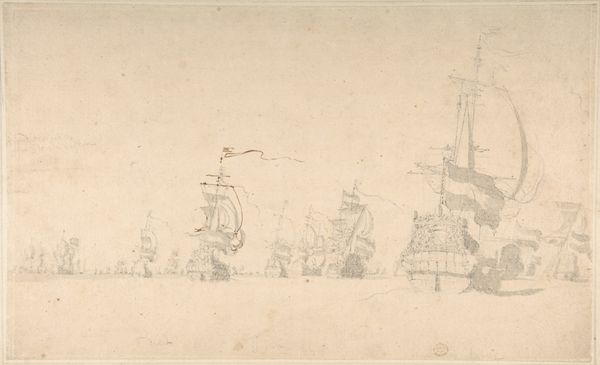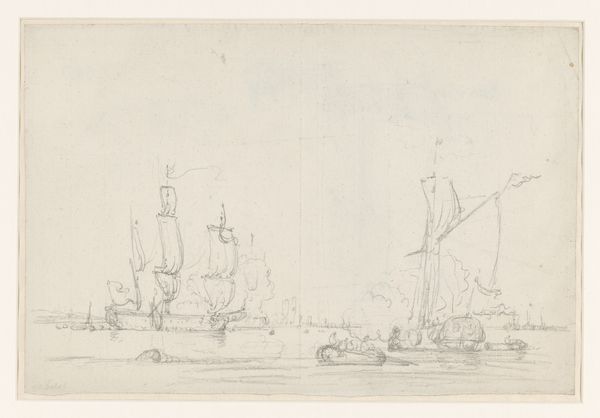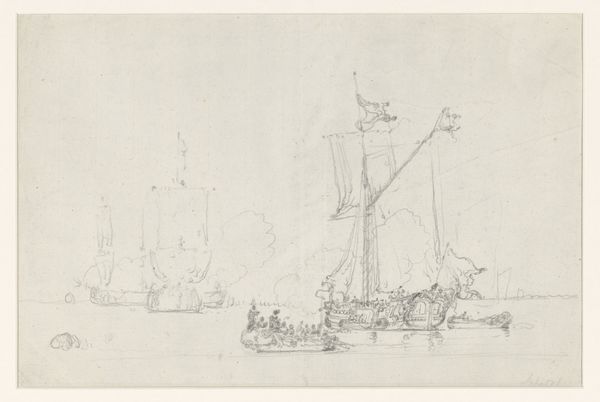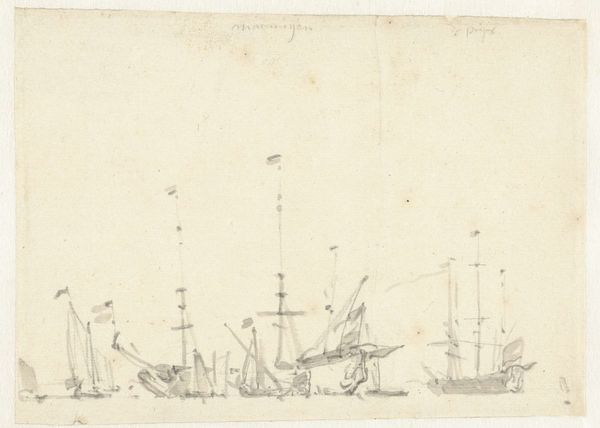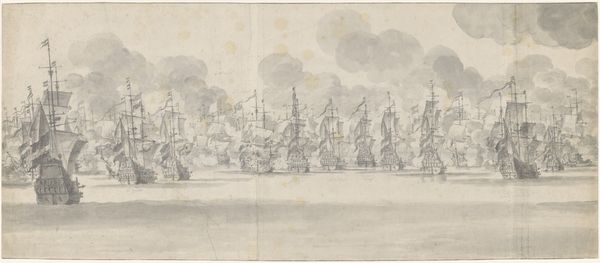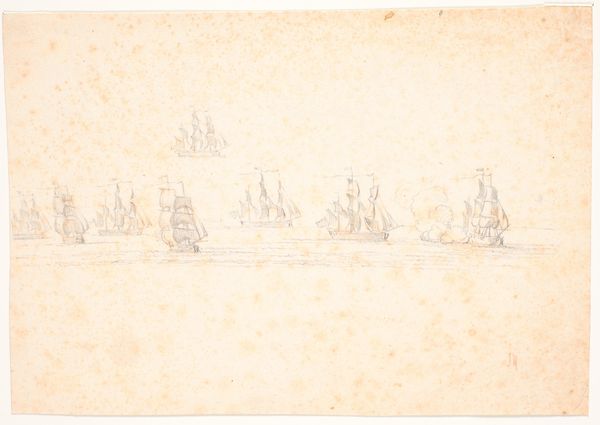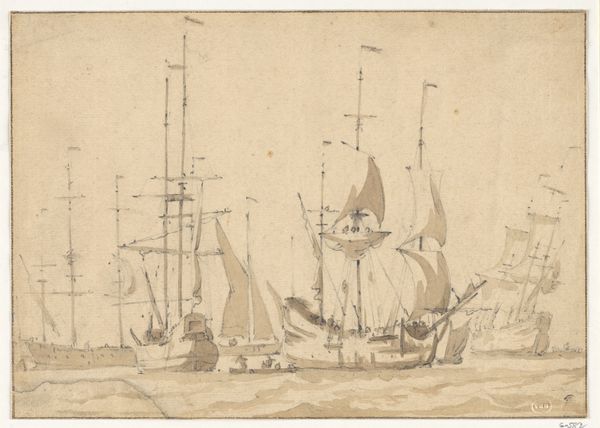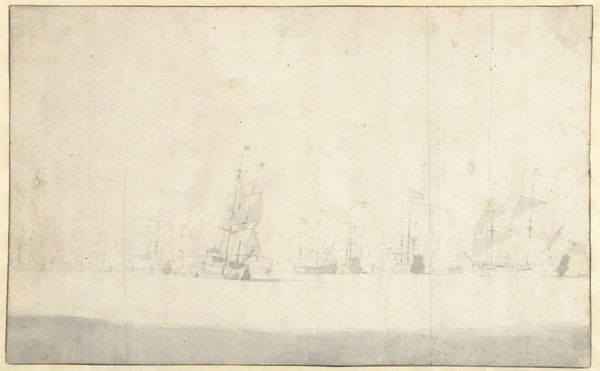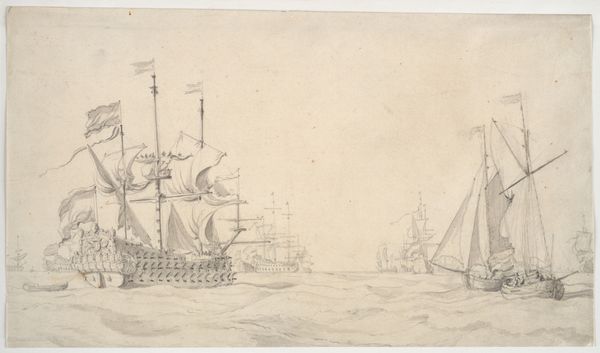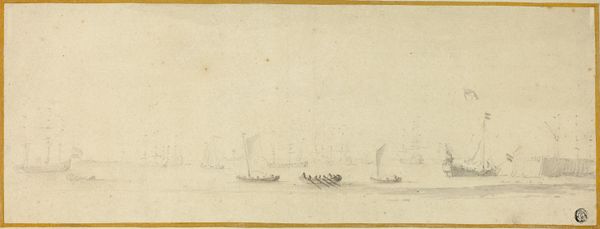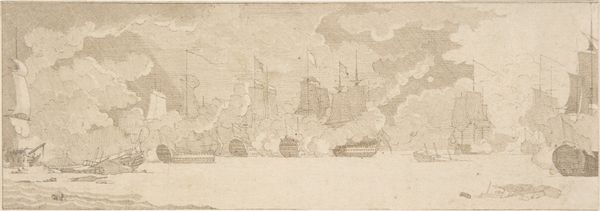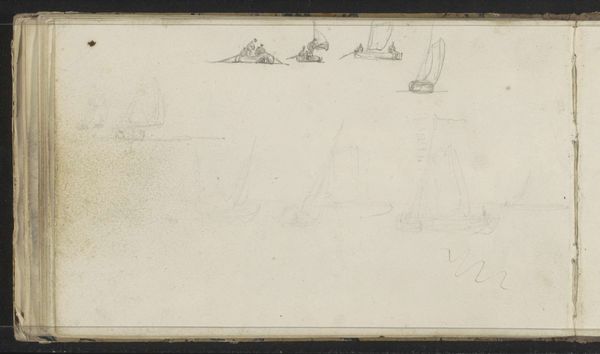
A Dutch Fleet Under Sail at Sea in a Light Breeze 1665
0:00
0:00
drawing, pencil
#
drawing
#
dutch-golden-age
#
landscape
#
pencil
Dimensions: 10 9/16 x 21 in. (26.8 x 53.3 cm)
Copyright: Public Domain
Curator: What an evocative scene. We're looking at "A Dutch Fleet Under Sail at Sea in a Light Breeze," a pencil drawing by Willem van de Velde the Elder, created around 1665. Editor: It's interesting to see this scene depicted in pencil; it gives the whole image a lightness of being. Considering the immense resources involved in sailing a war fleet, its depiction feels subdued, almost dreamlike. Curator: It's important to remember the context; the Dutch Golden Age was also a period of intense maritime power, of international competition, which shaped much of Dutch identity, including trade, colonization, and yes, naval strength. Editor: Yes, and this type of marine drawing would have served a real purpose; not only as a commodity sold as art, but also as blueprints. Van de Velde and his workshop were renowned for the accurate detail they achieved, and these informed shipbuilders, captains, and other actors invested in the naval industry. You can tell that labor and a knowledge of materiality was critical for him to produce this. Curator: Indeed. It reflects the tension inherent to Dutch society. On one hand, the incredible power and resources at their disposal – demonstrated in the sheer number of ships portrayed, but rendered almost vulnerable. There's no heavy political rhetoric here. We see this calm breeze as if the sea itself contains a power the humans have only partially tamed. Editor: It's precisely this relationship between humans and nature, the constructed versus the natural, which becomes clear in his careful renderings of the ships—laboriously built by hand from very specific woods—contrasting against the ocean's surface and wind direction that he implies with spare use of lines. Curator: To me, this image is potent as a cultural artifact because it evokes questions about maritime power as both strength and an illusion, questioning not only national aspirations, but more broadly, human impacts upon nature that extend even to our present moment. Editor: I agree; to reconsider images like these through a contemporary material lens helps us better understand the nexus of humans, the means of production, and our interaction with the environment across vast stretches of time.
Comments
No comments
Be the first to comment and join the conversation on the ultimate creative platform.
